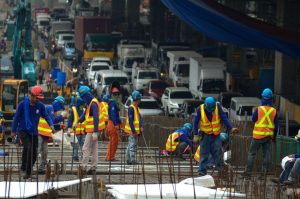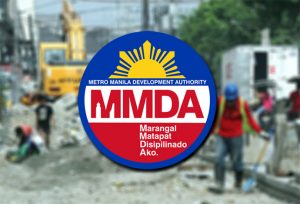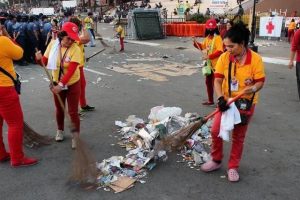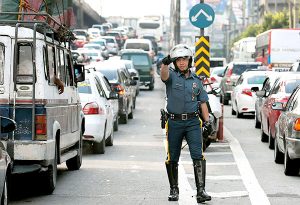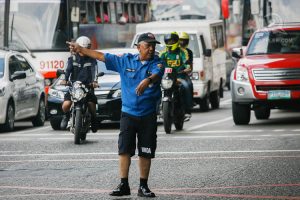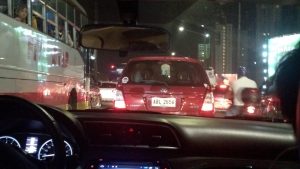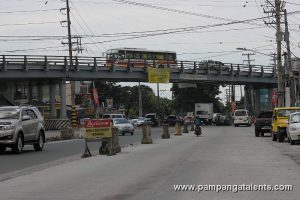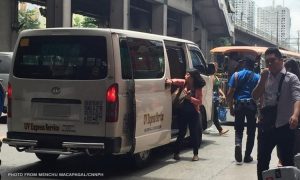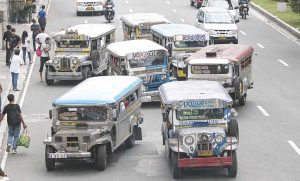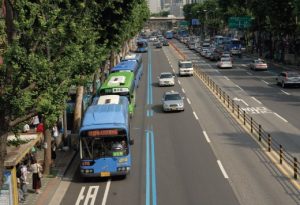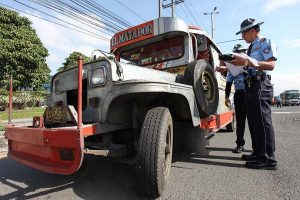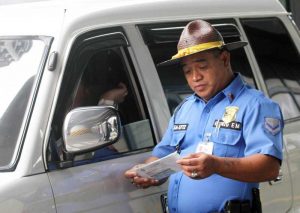In Part 1 of our online Opinion column, we proposed how the horrendous Metro Manila traffic can be managed using the 3 E’s – Engineering, Education, and Enforcement. We looked at how economic growth can cause traffic congestion and how Malaysia worked on their traffic problem. We considered the Unified Vehicular Volume Reduction Program (UVVRP), more common known as “Numbers Coding”, as a failure, cited its ill side effects, and proposed its removal. We also supported the Duterte administration’s “Build, Build, Build” program and their proposed transfer of the seat of government from Manila to Clark to decongest the metropolis. We now look at other engineering solutions.
If we look at the history of the Metropolitan Manila Development Authority (MMDA), we will find that it was created as a political whim, not as an engineering solution. It was created during the Marcos administration to literally install then First Lady Imelda Marcos as the de facto governor of Metro Manila. Operated under the Office of the President, the MMDA was tasked to develop, expand and maintain the metropolis. Initially, it handled beautification and cleanliness projects by employing thousands of Metro Aides, who were technically street cleaners armed with brooms and dust pans. When the police forces of the different towns, cities and provinces were consolidated with the Philippine Constabulary to form the Integrated National Police (PC-INP), the MMDA created Traffic Aides to assist the police officers in directing the traffic, not to manage nor enforce traffic rules and regulations. Eventually, the MMDA became the redemption center for confiscated driver’s licenses and the payment center for traffic citation tickets.
The administration of President Corazon Aquino took a “soft glove” approach to handling abusive bus drivers plying the main highway, Epifanio delos Santos Avenue, which is more commonly known as EDSA. People were still reeling from the abuses caused by the military and police, especially the PC, during Martial Law and under the Marcos administration, that the men in uniform were generally loathed by the masses. The Cory government removed the Constabulary Highway Patrol Group (CHPG) and their tough hard-line enforcement stance from patrolling EDSA and tasked the MMDA to handle traffic management and enforcement on the highway. From managing EDSA, the MMDA eventually took over the traffic chores of the police force, which was re-organized as the Philippine National Police (PNP). Unfortunately, most of the MMDA traffic enforcers were former Metro Aides or Traffic Aides who lacked the necessary training on the technicalities and legalities of traffic management and enforcement. Some became more abusive than the career police enforcers they replaced. Thus, the general disdain and disrespect for the MMDA enforcers.
Short-Term Solutions and U-Turn Slots
Because of Cory Aquino’s disdain for the abuse of authority perpetuated during the 21-year Marcos regime, the Philippine Constitution was changed to limit the President of the Republic to just one 6-year term in office. This limitation implies that political appointees also have just six short years to work on their respective tasks and assignments. At the MMDA, different management styles and ever-changing rules and regulations over the tenures of several MMDA Chairmen, from Orbos to Tolentino, did not help in finding long-term solutions for the worsening traffic problems. Because the appointed MMDA Chairman had a limited term, he and his team could only come up with short-term solutions. Meanwhile, career MMDA employees and enforcers, some of whom have become corrupt over the years, hide behind Civil Service laws when their illicit activities are exposed, making their dismissal a long tedious process and making traffic management increasingly difficult for the well-meaning and patriotic new appointees.
One of the MMDA’s short-term solution is the replacement of intersections with U-Turn slots. At the start, the MMDA closed several intersections along EDSA and implemented the U-Turn slots to alleviate the traffic slowdown caused by the stoplights on intersections. Then, seeing its potential, they implemented the U-Turn slots in major roads all over Metro Manila, regardless of the lane size. When the traffic volume was low, the U-Turn slots seem to work. But when the volume increased, the U-Turn slots became choke points, which further worsened the traffic congestion. Instead of speeding up traffic flow, U-Turn slots actually slows traffic flow because vehicles have to slow down in the fast lane to make a U-Turn, and then slow the fast lane on the other side to merge into traffic. This would be fine if all drivers have the discipline to stay in their lanes but we all know that most drivers lack discipline because they lack training. U-Turn slots are also inherently dangerous because most slots are located just a few meters from an intersection, compelling drivers to quickly merge from the outer slow lane into the inner fast lane just to get into the U-Turn slot. The merging maneuver further slows down general traffic flow and contributes to the traffic congestion several kilometers before the U-Turn slot. If you don’t believe it, try crossing from Congressional Avenue to Roosevelt using the U-Turn slot on EDSA. You’ll be lucky if you can make it across in 5 minutes during rush hour.
Intersections as Choke Points
You have to understand that the MMDA was compelled to install U-Turn slots because most drivers don’t know how to drive across an intersection. All they know is that they have to be the first to cross unmindful of the position of other vehicles and road users. Most drivers cross an intersection in an uninterrupted line like they’re dancing the Conga Train because most unregulated intersections are actually choke points. If you stop at an intersection that does not have a traffic light, you’ll likely sit in your vehicle for a few minutes before you can drive across, if ever you find a gap. We therefore suggest that intersections crossing EDSA should be replaced with steel vehicle overpasses, or flyovers as we like to call them. The construction of steel flyovers can be done off-site and the on-site installation will be much quicker than constructing a concrete bridge or an underpass. Besides, when there is a need to reopen the intersection or widen the road, the steel bridge can be dismantled and stored for reinstallation or be reused somewhere else. To cite an example, traffic at the intersection of Jose Abad Santos Avenue and MacArthur Highway in San Fernando, Pampanga became more manageable when the local government installed a steel overpass over the intersection.
It has been observed that intersections and pedestrian overpasses have become traffic choke points because most of these have become jeepney and bus stops and illegal terminals, even when there are traffic signs that say “No Loading/Unloading”. PUV drivers have habitually and wantonly committed this traffic violation because they know that they can get away with it. They either have immunity because they have paid off the enforcers in the area (lagay) or they have strong political backers (padrino). What they don’t know is that they inconvenience thousands of road users who have queued up trying to squeeze into the intersection they are obstructing and that they have become bad influences to their young passengers who will become future drivers. Aside from the jeepneys and the buses, traffic flow is further obstructed by the UV Express vans that stop anywhere to pick up passengers who take time ducking into the rear tail gate of the van, as well as slow tricycles and motorcycles that hog the fast lane. All these inconsiderate drivers are guilty of obstructing the flow of traffic to, in, and from an intersection, whether or not the intersection is regulated by a traffic light. Violators contribute to the traffic problem but they seem oblivious to the situation and always seem to get away scot-free.
Mass Transportation
It’s a fact that mass transportation like trains and buses is the most effective way to move a large number of people over any distance. Here in the Philippines, mass transportation includes the ubiquitous jeepney, which is the subject of a modernization program by the government. However, aside from modernization, we observed that jeepneys should undergo a rationalization and regulation program. Despite the existence of the Land Transportation Franchise Regulatory Board (LTFRB), there seems to be too many jeepneys plying the streets. In fact, there’s too many of them that some are just parked illegally on the streets waiting for their turn to ferry passengers. They even have controllers to queue them and barkers to call passengers to board. We find this highly inefficient. Parked jeepneys occupy road space that can be used otherwise. Parked idling jeepneys pollute the air around them with toxic diesel fumes. Just take a look at the first corner on Roosevelt after you turn right from the EDSA-Muñoz intersection in Quezon City or at the corner of España Avenue and Blumetritt Road in Manila. Some of these dilapidated jeepneys are even double-parked on the main road obstructing traffic. And we haven’t even mentioned the tricycles yet…
Clearly, there is a need to improve the mass transport system within the city as there is a need to engineer it in such a way that it will instill discipline among drivers and commuters alike. In Seoul, South Korea, the buses are mandated to stay in the blue lane, which is the equivalent of the yellow lane along EDSA. Bus drivers pick up passengers only in designated bus stops and they always stay in the bus lane even when traffic is heavy. They know that when they stop for passengers indiscriminately or veer out of the blue lane, their action will be caught by the numerous closed circuit television (CCTV) cameras dotting the highway. By the time they get back to the bus terminal at the end of their shift, the errant bus driver will be notified by the bus company about the traffic violation with the accompanying time-stamped photo, ticket and fine. The bus company will pay the fine and deduct it from the driver’s salary. The Korean mass transport system was engineered to instill discipline through efficient monitoring and effective penalties.
Mandatory Driver Insurance
Most of our PUV drivers are oblivious to the traffic laws because they do not feel the pinch when they violate it wantonly. When they do get caught, they know they can talk or pay their way out of it. The only time they feel inconvenienced is when they have to redeem their confiscated driver’s license, if they surrender their real license since most of the time, they give their fake ones. Otherwise, most PUV drivers are indifferent to the law because they are seldom affected by it. By law, owners are mandate to insure their vehicles with Third Party Liability (TPL) insurance coverage during its annual LTO registration renewal. TPL insurance covers the compensation of human life or limbs or part of the hospitalization expenses in case the insured vehicle collides, hits, or runs over a person and not an object. Of course, nobody wants to run someone over deliberately or even accidentally, thus TPL is a big money-maker for insurance companies, more so when the insured vehicle is seldom used, like a second vehicle or a collectible car. After all, parked vehicles, by themselves, are inanimate objects and insuring inanimate objects offers no solution to our worsening traffic problem.
But what if the law was amended to require the drivers to have mandatory TPL insurance instead of the vehicles? The vehicles can still be covered with comprehensive insurance to pay for damages to property in case of an accident but to mandate driver’s insurance has a lot of positive implications. For one, insuring the driver with TPL means the coverage goes with the driver regardless of what vehicle he or she is driving. Insurance companies and brokers will have to come up with information campaigns so drivers will know more about how insurance works and be made more aware of the liabilities he/she will face in case of an accident. If the driver does not incur any serious accidents or serious traffic violations during the year, his or her insurance coverage will stay the same or a discount may be given for his/her unblemished safety record. However, if the driver is a habitual traffic violator, or accumulates a lot of traffic citation tickets, or gets into a serious accident, then his/her insurance premium for the next year will be adversely more expensive since he/she will be considered a “risk” by the insurance companies. This way, drivers, especially those who drive PUVs, will be compelled to drive more carefully and follow the traffic rules and regulations more closely because it will have an adverse affect on their personal finances. They will definitely feel the pinch when they violate the law and all their lagay or padrino can’t do anything to protect them. Sure, the marginalized portion of society will call this idea “anti-poor” but we’d like to consider it more as “pro-life”, don’t you think?
To summarize our take on the first E of the 3E’s, that of Engineering as a solution to manage the current traffic problem, we find the following:
- We need to engineer more roads to compensate for the increased vehicular volume, thus the “Build, Build, Build” program of the Duterte government will alleviate the traffic congestion in the long run;
- We should learn from the example set by Malaysia about long-term solutions for the traffic problems;
- Government should scrap the UVVRP or Numbers Coding since it does NOT work.
- UVVRP does more harm than good. It actually increased vehicular volume instead of reducing it.
- As a side effect, UVVRP caused a big parking problem in the metropolis.
- We should support the idea to move the seat of government to Clark to decongest Metro Manila and spread employment and commerce to nearby provinces, which will decentralize businesses from Manila as well.
- Government should take a closer look at the MMDA and see if it can be engineered differently to help solve the traffic problem.
- Government planners should come up with long-term solutions for the traffic problems instead of short-term ones.
- Current U-Turn slots are ineffective and unsafe, and should be dismantled.
- Intersections should be reactivated using steel vehicular overpasses in some cases.
- Intersections should be cleared and designed better for efficient usage based on the local driving habits.
- Jeepneys should not only be modernized by also rationalized and regulated more closely.
- We should learn from the Blue Bus Lanes in Seoul, South Korea where monitoring is efficient and penalties are effective.
- Congress must pass a law that mandates annual TPL insurance for drivers and not the vehicles.
- Engineering solutions, not political ones are needed to solve the traffic problems around the country.
In the next part, we will tackle the second E of the 3 E’s – Education that will help alleviate traffic. Stay tuned!
 Power Wheels Magazine A Notch Above
Power Wheels Magazine A Notch Above

